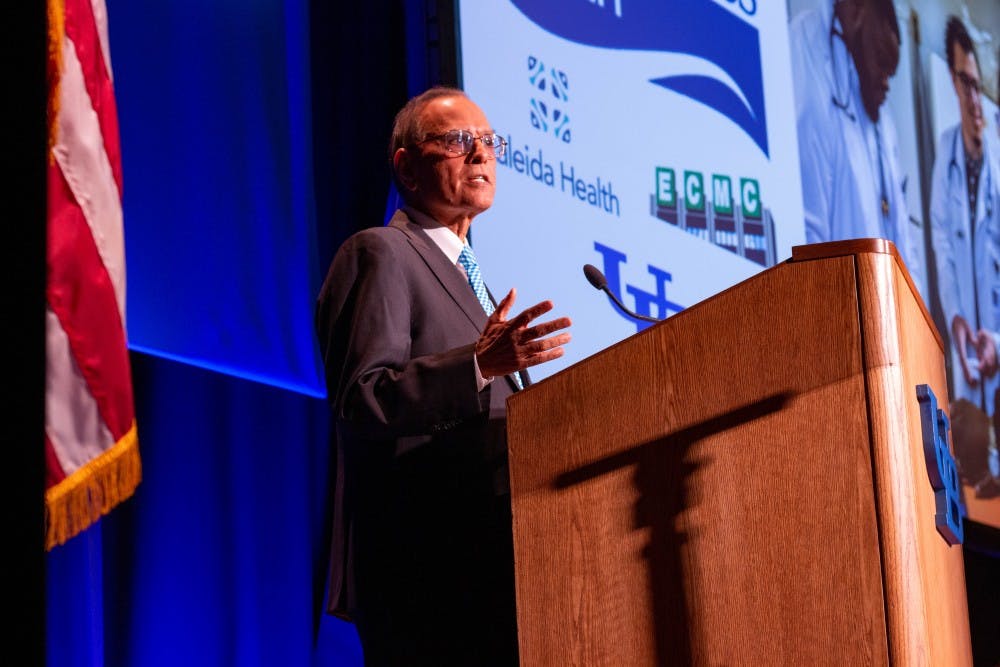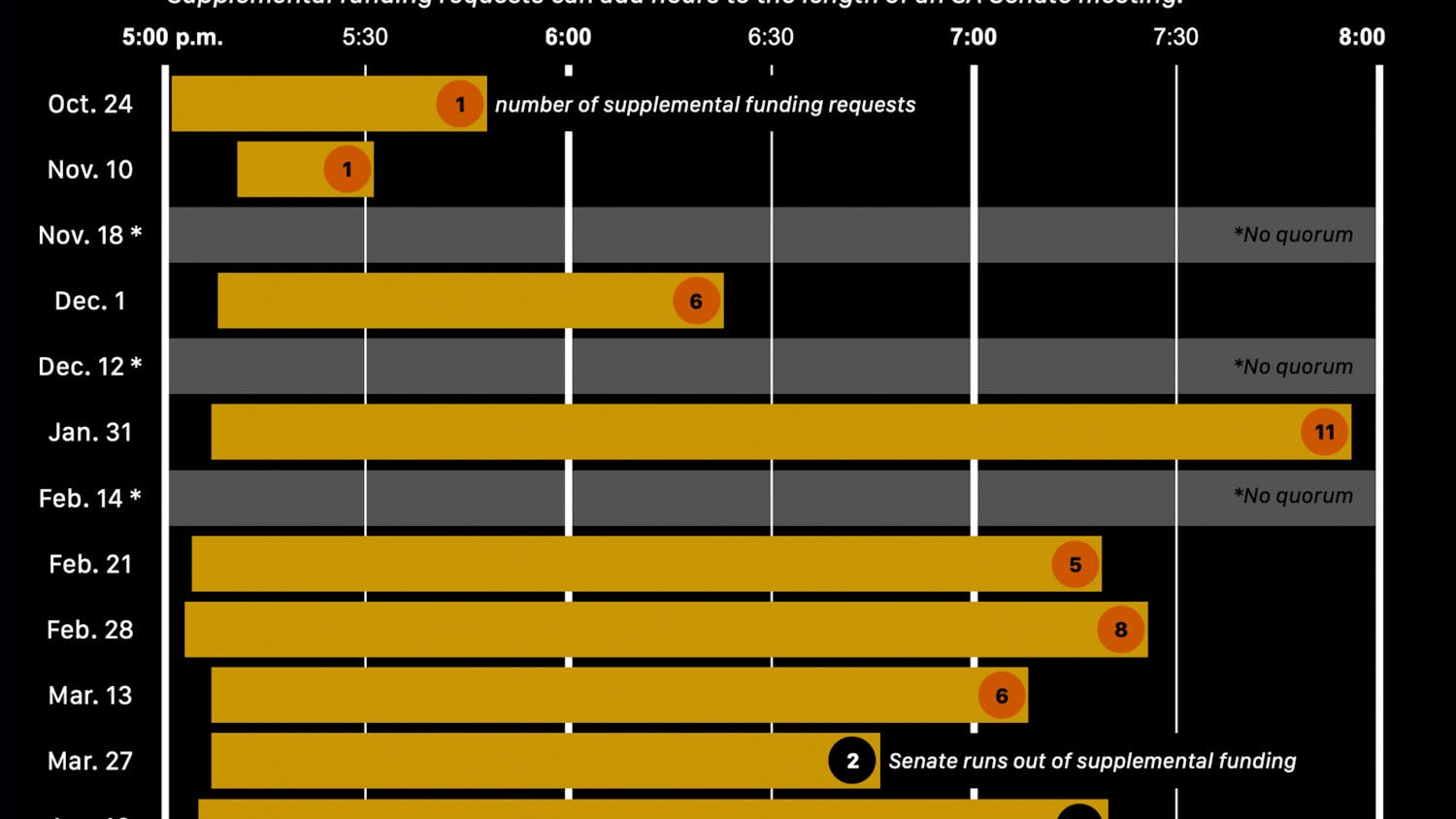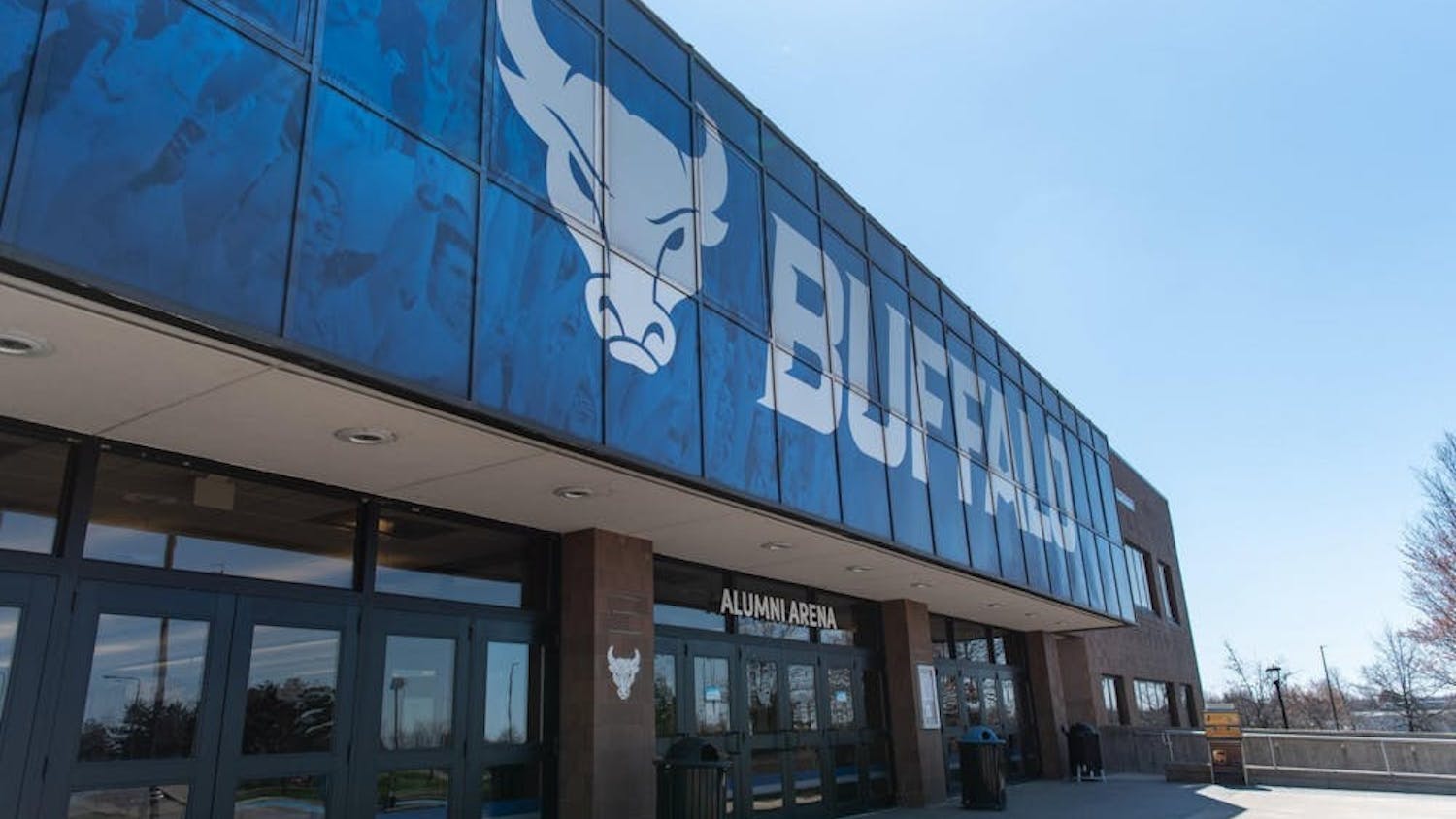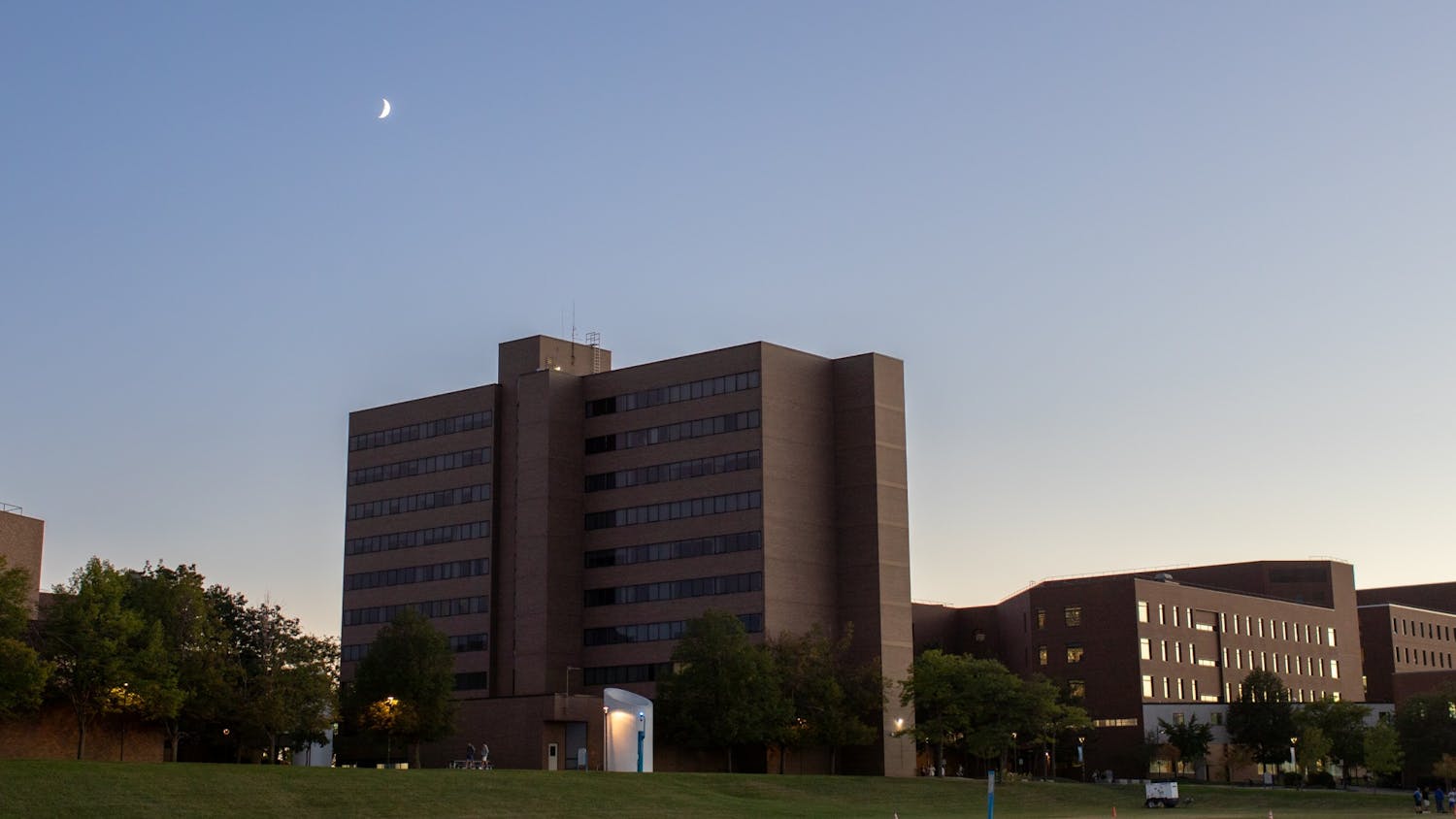UB President Satish Tripathi tried to remain upbeat during his half hour, pre-recorded State of the University address.
It was not easy.
His topics included: COVID, the loss of up to $40 million in state aid, the hiring freeze he has imposed and the financial losses UB has sustained by having less than 5,000 students on campus. He also highlighted UB’s recent social justice initiatives and its continued strong ranking among the nation’s Top 15 Research Universities by U.S. News & World Report.
He tried to inject bright notes in the mostly somber speech, which he recorded in the law library and made public Oct. 16. He commended faculty, students and administrators for the transition to online learning both in March and for the fall semester. And he noted that, unlike many area colleges, which saw a drop in enrollment, UB had a slight increase this fall. But, the extra tuition dollars will do little to offset the $19.2 million the state owes the university from the previous fiscal year, he said.
Nor will it help mitigate the projected state revenue shortfall of $13.3 billion for 2021 and $61 billion for 2024 due to the pandemic.
“Clearly, this is a serious financial situation—for our state, and for UB,” he said, during his ninth annual address on Oct. 16. “And we anticipate this financial strain for the foreseeable future.”
Four days earlier, on Oct. 12, Tripathi had sent a campus-wide update outlining much of these dire state statistics. In the email, Tripathi particularly highlighted “unfunded negotiated salary increases” for faculty as among the “university’s most pressing long-term financial concerns,” saying it could eventually cost “$81 million recurring.”
On Oct. 16, the eve of the speech, the United University Professions union sent a blistering response.
“UUP is not responsible for the failure of SUNY to secure money that the state has negotiated for salary increases,” the statement said. “Clearly, represented staff and faculty salaries and our basic cost of living raises have again been singled out as the biggest ‘pressing long-term financial concern’ by the president."
The statement said the responsibility to fund public universities falls on the state. It also questioned Tripathi’s efforts to attract and retain “skilled scholars and professionals.”
“The burden here is that the state has failed to provide for its public education system, including the cost of hiring and retaining highly skilled scholars and professionals, who President Tripahti only indirectly refers to as ‘resources,’” the statement said.
Tripathi has not responded to the criticism.
Tripathi opened his address with a summary of faculty, student and staff achievements during the pandemic, focusing on their contributions to anti-COVID efforts in Western New York.
UUP’s statement is the latest in a series of public criticism students and staff have leveled against the university for its COVID protocols. Others include: the summer protests by graduate student TAs over the university’s decision to allow students to campus in the fall, student and public concern over conditions at Goodyear Hall’s quarantine dorms and an October resolution by the English department calling for changes to UB’s COVID response.
Tripathi did not address any of the criticisms in his speech.
He did, however, acknowledge the pandemic’s toll on the university community as it “tested resolve, tapped reserves and tackled expectations.”
He praised the community for rising to the “challenges of the past 10 months” and said UB is addressing the budget deficit by reducing spending by 22.8% from the last fiscal year. “Our university was on sound financial footing when the pandemic began and we will be on sound financial footing when the pandemic is behind us,” Tripathi said.
He also highlighted several initiatives by UB students and faculty and played a video by Jacobs School of Medicine Associate Dean Tim Murphy, an infectious disease expert, who noted the 52 pandemic-related studies UB researchers are conducting.
“Everyone’s paying a lot of attention to clinical research nationally and locally.” Murphy said in the video. “This is what is going to contribute, importantly, to the solution to the pandemic.”
Tripathi also mentioned: a student project 3-D print PPE for dental students and hospital staff, a UB researcher-led initiative to track the genomics of COVID in Western New Yorkers and one UB alumn’s ambitions to shift his micro-distillery into a factory that makes hand sanitizer.
“This is how a great public research university responds in times of crisis: not by wringing our hands, but by rolling up our sleeves,” Tripathi said.
Tripathi outlined actions UB has taken to keep students and faculty safe on campus. He insisted that student, faculty and staff safety is UB’s “first priority.”
He specifically praised classroom density reductions in the fall, UB’s adaptation of distance-learning modules and the conversion of UB’s May commencement exercises to a virtual ceremony despite students’ initial protests and confusion over the promise of an “on-campus celebration” to be held at a “later date.”
“From March, when we transitioned 4,000 courses to a remote-learning format within 10 days; to May, when we converted UB’s 174th commencement exercises to a virtual celebration; to a fall semester that has seen an 87% reduction in classroom density, our first priority has always been providing our students with a transformative educational experience, while ensuring the health and safety of our university community,” Tripathi said.
Tripathi also took time to focus on social justice movements.
“The social movement that emerged after the killing of George Floyd, Ahmaud Avery, Breanna Taylor and Daniel Prude and many other men and women of color has amplified our university’s call to address racial injustice, racism and violence,” Tripathi said.
Tripathi insisted UB has answered this call to social action by renaming Putnam Way, a road on North Campus, after the African American civil rights activist Mary Talbert “to ensure that these symbols align with our identity as a diverse, inclusive scholarly community.”
In November, 2018, The Spectrum pointed out that Peter Putnam, whose name also graced the main food court in the North Campus Student Union, held racist views. The Spectrum also highlighted the controversial history of Millard Fillmore, the former UB and U.S. president who signed the Fugitive Slave Act of 1852.
In August, after Black Lives Matter protests gripped the country and enveloped Buffalo, UB announced it would strip the controversial names.
UB also welcomed its inaugural cohort of Diversity Innovation Distinguished Visiting Scholars, which was created by the Center for Diversity Innovation to promote diversity, equity and inclusion. Other UB initiatives include the formation of the Criminal Justice Advocacy Clinic,which will represent imprisoned survivors of domestic violence, a Health Equity Research Institute in December “to [confront] one of Buffalo’s most entrenched problems — namely, race-based health disparities” and the University Police Advisory Committee to make recommendations about how university policing and community police relationships can be improved.
Tripathi also convened the President’s Advisory Council on Race, a group of faculty, staff, students and alumni “leading discussions on issues of race and culture to guide UB’s programs, policies, activities and traditions.”
The council issued the following goals to promote racial equity and equality at UB:
- Offer anti-racism courses for undergraduates
- Ensure UB adopts holistic admissions process
- Create unique mentorships for student researchers of color
- Increase diversity in faculty, staff and senior leaders
Tripathi also spotlighted a $3 million grant from Andrew W. Mellon Foundation to the university’s College of Arts and Sciences, which will launch UB’s Native American Studies department over the next four years. It remains unclear if any of that money will also benefit other race studies departments, such as the Transnational Studies department and the African and African American Studies program, which were cash-strapped before the pandemic hit. Tripathi restated his commitment to elevating UB’s reputation as a public research university and realizing the goals of the “Boldy Buffalo” campaign, the largest fundraising campaign in UB's history.
“Over the past decade UB has risen on the rank 24 spots, more than any peer university in the AAU," Tripathi said. “We continue to experience an increase in our selectivity and in the increased enrollment of underrepresented minority students.”
“Boldly Buffalo” campaign donors, Tripathi said, also supported 216 endowed scholarships and 26 endowed chairs and professorships. The campaign, founded two and a half years ago, has already reached 96 % of UB's $650 million goal.
“In unprecedented times we are seizing unprecedented opportunities to serve the greater good,” Tripathi said.
Elizabeth Napolitano is the senior news editor and can be reached at elizabeth.napolitano@ubspectrum.com and on Twitter @LizKNapolitano
Elizabeth "Liz" Napolitano is the senior news editor for The Spectrum. She's an optimistic pessimist who found her love for journalism in Ecuador. She likes late night walks and reading Twitter threads in their entirety.





